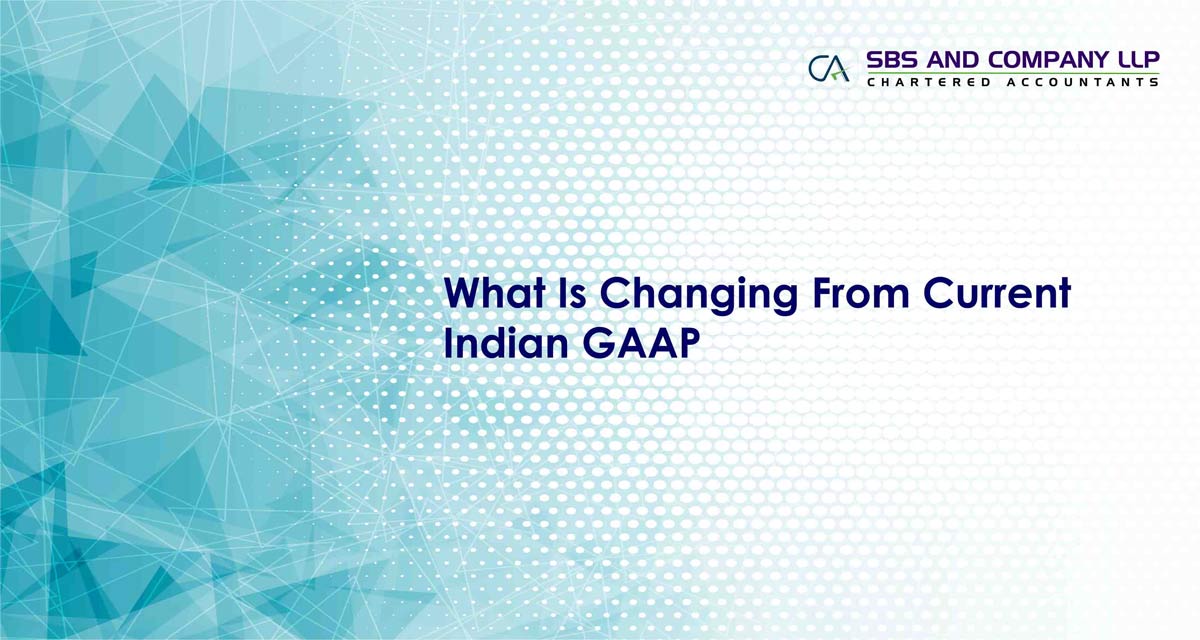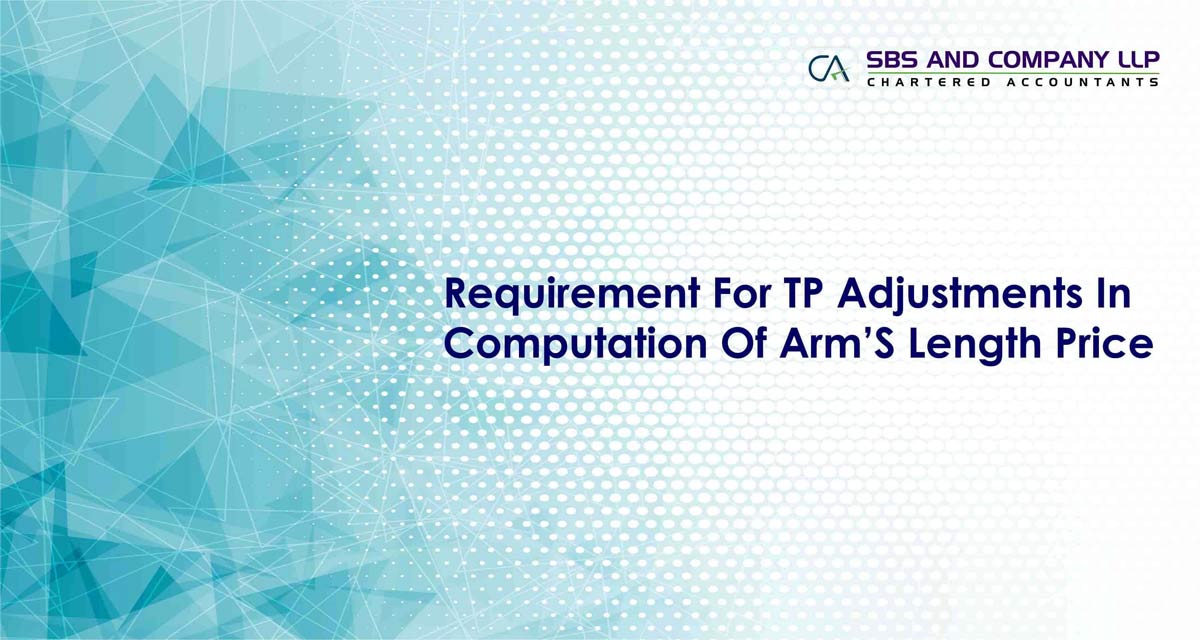Rule 10B(1)(e)(iii) provides that an adjustment should be made to the profit margin of independent comparable companies to take into account the differences in functions and risks. International commentaries on transfer pricing also recognize that controlled and uncontrolled transactions are comparable only when adjustments with respect to significant differences between them in the risks assumed is made. Therefore, in no event can unadjusted industry average returns themselves establish arm’s length conditions.
Thus, the objective of comparability analysis is to find more reliable comparables after acknowledging limitations in availability of information. Therefore, comparability adjustment would be warranted where reliability of results can be increased. The factors to be considered for comparability adjustments include:
The quality of data being adjusted;
The purpose of adjustment performed; The reliability of adjustment performed;
Whether functionally comparable companies which differ on account of other factors such as volume of operations, risk assumed should be accepted as comparables? How to eliminate the impact of such differences?
Appropriate comparability adjustments should be carried out to enable comparison between related and uncontrolled transactions
Eliminate financial impact of differences in risk profile
Account for extraordinary factors that may influence profitability Enhance comparability
Importance of undertaking comparability adjustments is recognized under the Indian transfer pricing regulations. The following are the various TP adjustments that are relevant to the Indian Tested party’s:
- Risk Ad justment:
The provisions of Rule 10B of the Rules prescribe the methods to be used and manner in which it is to be used in determining the ALP relating to any international transaction. In this regard, the provisions of rule 10B(1)(e) of the Rules which states as follows:
10B(1)(e)(iii) the net profit margin referred to in sub-clause (ii) arising in comparable uncontrolled transactions is adjusted to take into account the differences, if any, between the international transaction and the comparable uncontrolled transactions, or between the enterprises entering into such transactions, which could materially affect the amount of net profit margin in the open market;
It should be appreciated that one of the principal elements for a transfer pricing analysis is the analysis of risks assumed by the respective parties. In an open market, theoretically, the assumption of increased risk is normally compensated by an increase in expected return. Accordingly, controlled and uncontrolled transactions are comparable only when adjustments with respect to significant differences between them in the risks assumed is made.
If the Tested Party functions under a limited risk environment vis-à-vis entrepreneurial risk borne by comparable companies who are independent service providers. Accordingly, it is operating under economic circumstances that warrant adjustments to the margins earned by the comparable companies, so as to make the comparison between the margins earned by the comparable companies and the Tested Party appropriate.
The comparables selected for the analysis by the tax office generally include companies, which have fairly diversified areas of specialization, perform additional functions viz., marketing, etc. and bear more risks akin to any third party independent service provider vis-à-vis the Indian Tested Party. The risks such as legal risk, marketing risk, business risk, etc. are normally associated with every independent company, whereas the Indian tested party is generally insulated from these risks. Further, the tested party bears lesser business risk than independent comparable enterprises due to the nature of its revenue model. It is guaranteed profits by way of a mark-up on costs incurred, regardless of its success or failure. As a consequence, the margins earned by the tested party would be comparatively lower to reflect the lower level of business risk. In addition, it may be noted that among other risks the Tested Party does not bear any credit risk.
Where a related party sets prices for intercompany transactions so that the Tested Party receives a specified level of operating profitability, the pricing policy can have the effect of removing virtually all business risk from the controlled entity. When analysing controlled entities that bear such a low level of risk by reference to a set of broadly comparable independent firms, as is the case under TN MM, it is a challenge to identify independent firms that are sufficiently comparable to the controlled entities in terms of risks assumed. In circumstances where the Tested Party has been effectively guaranteed a fixed return, functional similarity does not adequately address this risk differential. In such cases, an adjustment to the comparables for this risk differential seems warranted under the Rules and would provide a more precise pricing of the true risk borne by the Tested Party.
Risk analysis of comparable company’s vis-à-vis the Tested Party Business/market risk
Market risk occurs when a firm is subjected to adverse sales conditions due to either increased competition in the marketplace, adverse demand conditions within the market, the inability to develop markets or position products to service targeted customers or technology obsolescence. The market risks to be considered include, among other things, fluctuations in cost, demand, pricing, and inventory levels.
With respect to the services provided by the Tested Party to its AE, there is no specific market risk for the Tested Party as it is not required to penetrate into newer markets or faces competition. The Tested Party does not have any exposure to market risk as it renders all services on a contract basis exclusively to its AE on a revenue model.
In contrast, independent companies bear significant market risks as they are responsible for marketing their services, identifying customers, facing competition and penetrating into the market. Further, slowdown in the IT industry, adverse economic conditions, technology obsolescence, fluctuations in the demand-supply, etc. would have an impact on the margins of the independent companies. Independent companies bear the vagaries of economic and business factors that prevail in the industry and thus, either incur losses or earn profits due to their dealing in market conditions. In case there is a downfall in the market and they are not able to generate sufficient business, independent companies are likely to have low margins or incur losses. However, the Tested Party would still continue to earn a mark-up over its costs.
Further, if the Tested Party is a cost-plus entity and is protected from pricing risk by its AEs, means that it does not take the risk of loss nor is it entitled to any profit/surplus therein, but earns an assured return based on its limited functional and risk profile.
However, in an independent scenario, the comparable companies (that are being considered to determine the ALP) bear the pricing risk, thereby undertake the risk of loss and at the same time also enjoy any profit/surplus therein, therefore substantiating the fundamental principle of economics i.e., the greater the risk, the greater the expected return. In this regard, we wish to emphasize that, since the comparable companies bear the pricing risk and the impact of the same is reflected in the return i.e., net profit/margin it earns, which is not in the case of the Tested Party, a risk adjustment as per Rule10B(1)(e)(iii) for this difference of pricing risk borne by the comparable companies is warranted.
Contract/service liability risk
Risks associated with service failures, including not meeting the generally accepted/ regulatory standards influences the price charged in a particular transaction. This could result in product recalls and possible injuries to end users resulting in compensation claims.
If the Tested Party acts as service provider for its AE and provides services based on the directions received from them. The Tested Party does not have any contractual liability for losses or damages for service failures and the cost of rework (if any) would be recoverable from its AE on a cost plus basis. Accordingly, in economic substance, the Tested Party does not bear any service liability risk. Furthermore, any rework if required will be reimbursed by AEs on a cost plus mark-up basis and hence, risk/cost of rework also resides with AEs and not with the Tested Party. On the other hand, independent third party service providers undertaking marketing and rendering services directly to customers are exposed to service failures and accordingly bear the service liability risk.
Technology risk
This risk arises if the market in which the company operates in sensitive to introduction of new products and technologies. In such a case, business enterprises may face loss of potential revenues due to inefficiencies arising from obsolete infrastructure and tools as well as obsolescence of production processes.
Most of the Indian Tested Party may not bear any risk on this account because they operates as a contract service provider, on a cost plus mark-up basis. On the contrary, independent service providers need to regularly invest in up-gradation of technology to provide new offering/services to the customers. Therefore, any risk arising out of technology obsolescence is considered for the pricing of the services.
Credit and collection risk
The credit and collection risks arise when an enterprise supplies products or services to a customer in advance of the payment. In such a scenario the firm runs the risk that the customer will fail to make payment.
If the Tested Party provides services only to its AE, it does not bear any credit and collection risks. Presuming, in an event where any cost is borne for receiving the delayed payment that cost also shall be reimbursed to the Tested Party on a cost plus mark-up basis. However, independent third party service providers bear substantial credit and collection risks.
Support from Indian judicial precedents
Several courts have recognized the importance of undertaking a risk adjustment to increase the reliability of comparability analysis. Some of these decisions are discussed as under:
I ntell inet Technologies India Private Limited (ITA No. 1237/BANG/2010) Mentor Graphics Noida Private Limited (ITA No. 1969/Del/2006) Sony India Private Limited (I.T.A. No. 4008(Del)/2010)
- Working Capital Adjustment:
The adjustment resulting from the different levels of accounts receivable and accounts payable between the tested party and the comparable companies can be calculated, as described below.
First, determining the difference between the tested party’s ratio of accounts receivable to total cost and the corresponding ratio of accounts receivable to total cost of each comparable. This difference represents the “excess” or “shortage” of accounts receivable, held by the tested party relative to the comparable companies.
Next, multiplying the above difference by an interest rate benchmarked in order to arrive at a figure representing the implicit interest expense or benefit to the comparable due to its different accounts receivable carrying costs.
Similar adjustments were made to determine the interest carrying costs associated with different levels of inventory and accounts payable between the tested party and each of the comparable companies.
Lastly, the adjustments on account of difference in levels of accounts receivable are added to the unadjusted operating revenue of the comparable companies, and the adjustments on account of difference in levels of inventory and accounts payable are reduced from the operating costs.
Based on such adjusted operating revenues and operating costs for the comparables, the operating margin, that the comparable would have earned had it been operating with similar working capital position as the tested party, is computed.
The formula used to calculate the adjusted operating margin is
Adjusted Operating Profit Adjusted Operating Revenue
where
Adjusted Operating Profit = Adjusted Operating Revenue – Adjusted Operating Cost
Adjusted Operating Revenue = Operating RevenueC + Accounts ReceivableTP - Accounts ReceivableC a Operating Cost TP Operating Cost C
Adjusted Operating Cost = Operating CostC + Accounts PayableTP____ -___ Accounts Payable______ C a
Operating CostTP Operating Cost C
C is the comparable company;
TP is the tested party;
; and? is the interest rate.
III. Capacity utilization/ idle capacity adjustment in case of start-up phase:
To improve the quality of comparables, one might need to calculate an economic/comparability adjustment for the differences in the level of capacity utilization by the comparables and the tested party. The need for a capacity utilization adjustment becomes more acute in cases where the tested party is in a start-up phase or is going through a phase of slow business growth/demand for its products and such situation is not faced by the competitors in the market, or where an eventuality such as a strike or lock-out at a factory results in a significant decline in production.
Thus, it demonstrates that adjustments towards idle time or excess capacity in case of service providers also is necessary and accepted methodology, practiced both by the taxpayer and revenue authorities.
The low profit margin earned or loss incurred due to incurrence of high start-up cost and low utilization of capacity is a common phenomenon in case of start-up business. This difference in cost levels of the start-up company vis-a-vis the comparables who might be established players would require an adjustment. The issue of adjustment on account of idle capacity hinges on the concept of the leverage that fixed cost offers to the profitability ratio of business.
The Delhi Tribunal In case of Global Vantedge Point Pvt Ltd wherein, the Tested Party was an information technology enabled (‘ITeS’) service provider, providing service primarily to its associated enterprise. The Tested Party adopting TNMM method, claimed an adjustment towards its bench strength (ie., idle time of employees) or surplus capacity to the extent of 33.33 % of total capacity. The reason for excess capacity was predicated on the fact that the Tested Party was in its start-up phase and the surplus capacity was carried in anticipation of future growth in business. The Delhi Tribunal held that whenever an entity was established it always carried some surplus capacity vis-à-vis present/projected business operations. Looking into the IT industry which was in a booming stage a surplus capacity to the extent of 1/3rd of the existing capacity is treated as normal in this industry in anticipation of future growth in business. Hence, an adjustment to the profitability of the comparables was allowed to the extent of 33.33 %. Reference could also be drawn in case of Genisys Integrating Systems India Pvt Ltd[4], wherein, the Bangalore Tribunal observed that as per information available in the public domain, the average underutilization of manpower in ITeS industry is 20 %
Mentor Graphics (Noida) Pvt. Ltd. v. DCIT (109 ITD 101) (Delhi)
Organisation of Economic Co-operation and Development
Global Vantedge Point (P) Ltd (37 SOT 1) (Delhi)
Genisys Integrating Systems (India) Pvt Ltd vs DCIT(2012) (53 SOT 159) (Bang) Mando India Steering Systems Pvt Ltd vs ACIT (2014-TS-110-ITAT-CHNY-TP- 2014) Global Turbine Services Inc vs ADIT (TS-259-ITAT-DEL-TP-2013)
Amdocs Business Services Pvt Ltd (54 SOT 46) (Pune)
Mobis India Ltd(ITA No 2112/Mds/2011)
The rationale for carrying out adjustments to eliminate differences in capacity utilization or idle capacity adjustments is explained in para 2.7 of the OECD Transfer Pricing guidelines. Depending on the facts and circumstances of case and in particular on the proportion of fixed and variable costs, the transactional net margin method (‘TNMM’) may be more sensitive than the cost plus or resale price methods because differences in the levels of absorption of indirect fixed costs (eg fixed manufacturing costs or fixed distribution costs) would affect the net profit indicator but may not affect the gross margin or gross markup on costs if not reflected in price differences.
- Depreciation adjustment:
If Tested Party depreciates the assets on an accelerated basis as compared to the depreciation rates prescribed under the corporate law. Further, based on analysis of annual reports of comparable companies, 60-70% of comparable companies apply the depreciation rates prescribed under the corporate law. Accordingly, the depreciation policy followed by Tested Party and the comparable companies are not similar and hence, requires to be adjusted for such differences while determining arm’s length margin of international transactions of Tested Party.
Quantification of depreciation adjustment:
While the Rules provide that appropriate adjustments should be made for arriving at the arms length price, the basis for making such adjustment is not specifically provided by the Indian Transfer Pricing Regulations.
The following cases where the adjustments for such differences have been provided by various Tribunals: E-gain Communication Pvt. Ltd. v. ITO [2008-TIOL-282-ITAT-PUNE] SchefenackerMotherson Ltd v. ITO [2009-TIOL-376-ITAT-DE L] CIT v. Rakhra Technologies Pvt. Ltd. [2011-TII-07-HC-P&H-TP] Amdocs Business Services Pvt. Ltd. v. DCIT [ ITA No. 1412/PN/11] Qual Core Logic Ltd v. DCIT (ITA No. 893/HYD/2011) Honeywell Technology Solutions Lab Pvt Ltd v. DCIT (IT(TP)A No. 1344/Bang/2011)
24/7 Customer (P) Ltd. vs. DCIT (ITA No. 227/Bang/2010)
Reference can be drawn to the above judicial precedents, wherein any specific approach/method have been provided while adjudicating the depreciation adjustment:
Hon’ble Bangalore Tribunal in the case of 24/7 Customer (P) Ltd. vs. DCIT (ITA No. 227/Bang/2010) – Adjusting the depreciation of comparable companies using the ratio of depreciation to gross block of assets of the tested party. The following are the various steps which are to be followed in computing depreciation adjustment:
Step 1: Calculate depreciation ratio (Depreciation/ Gross Block) of the Tested Party;
Step2: Calculate the depreciation amount of the comparable companies on the basis of depreciation ratio as calculated in Step 1;
Step 3: Recalculate the operating cost & operating profit of the comparable companies on the basis of deprecation calculated in Step 2;
Step 4: Calculate the operating margin (Operating profit/Operating Cost) on the basis of revised operating cost & profit as calculated in step 3 above;
Step 5: Calculate the ALP (average of the margins of comparable companies as calculated above).
Concluding remarks:
Material differences between comparable companies can render TP analysis inaccurate.The five comparability factors to be kept in mind for TP documentation and analysis include:
Characteristics of property or services;
Functions performed taking into account the assets employed and risks; Assumed;
Contractual terms;
Economic circumstances of the parties; and
Business strategies pursued.
This article is contributed by Partners of SBS and Company LLP – Chartered Accountant Company You can be reached at This email address is being protected from spambots. You need JavaScript enabled to view it.








